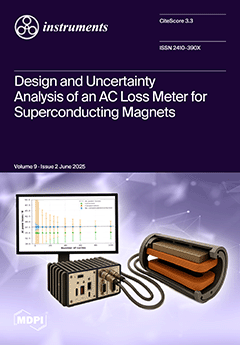In the continuous pursuit of minimally invasive interventions while ensuring a radical excision of lesions, Radio-Guided Surgery (RGS) has been for years the standard for image-guided surgery procedures, such as the Sentinel Lymph Node biopsy (SLN), Radio-guided Seed Localization (RSL), etc. In RGS,
[...] Read more.
In the continuous pursuit of minimally invasive interventions while ensuring a radical excision of lesions, Radio-Guided Surgery (RGS) has been for years the standard for image-guided surgery procedures, such as the Sentinel Lymph Node biopsy (SLN), Radio-guided Seed Localization (RSL), etc. In RGS, the lesion has to be identified precisely, in terms of position and extension. In such a context, going beyond the current one-point probes, introducing portable but high-resolution cameras, handholdable by the surgeon, would be highly beneficial. We developed and tested a novel compact, low-power, handheld gamma camera for radio-guided surgery. This is based on a particular position-sensitive Silicon Photomultiplier (SiPM) technology—the FBK linearly graded SiPM (LG-SiPM). Within the camera, the photodetector is made up of a 3 × 3 array of 10 × 10 mm
2 SiPM chips having a total area of more than 30 × 30 mm
2. This is coupled with a pixelated scintillator and a parallel-hole collimator. With the LG-SiPM technology, it is possible to significantly reduce the number of readout channels to just eight, simplifying the complexity and lowering the power consumption of the readout electronics while still preserving a good position resolution. The novel gamma camera is light (weight), and it is made to be a fully stand-alone system, therefore featuring wireless communication, battery power, and wireless recharge capabilities. We designed, simulated (electrically), and tested (functionally) the first prototypes of the novel gamma camera. We characterized the intrinsic position resolution (tested with pulsed light) as being ~200 µm, and the sensitivity and resolution when detecting gamma rays from Tc-99m source measured between 134 and 481 cps/MBq and as good as 1.4–1.9 mm, respectively.
Full article





